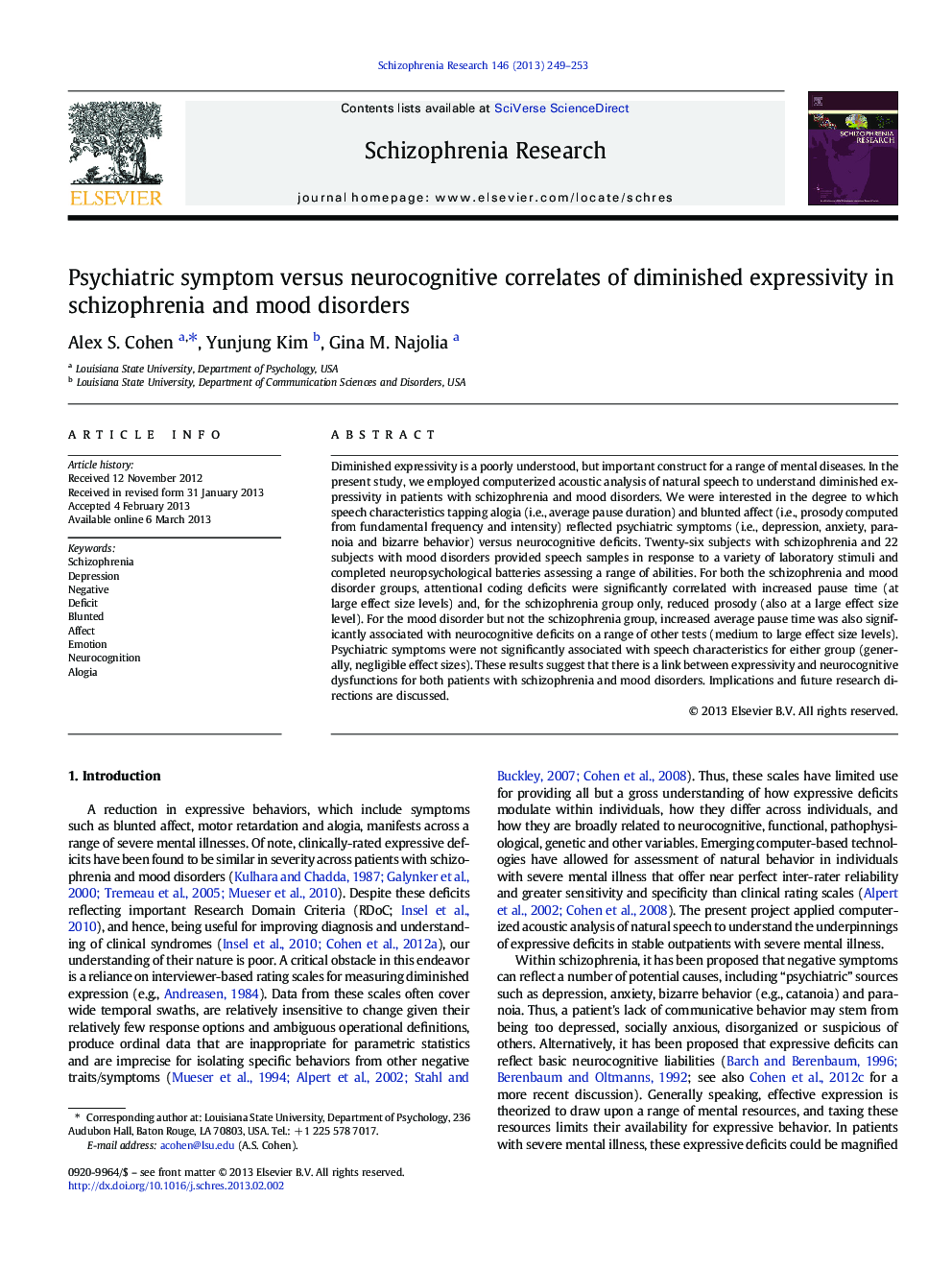| Article ID | Journal | Published Year | Pages | File Type |
|---|---|---|---|---|
| 6826373 | Schizophrenia Research | 2013 | 5 Pages |
Abstract
Diminished expressivity is a poorly understood, but important construct for a range of mental diseases. In the present study, we employed computerized acoustic analysis of natural speech to understand diminished expressivity in patients with schizophrenia and mood disorders. We were interested in the degree to which speech characteristics tapping alogia (i.e., average pause duration) and blunted affect (i.e., prosody computed from fundamental frequency and intensity) reflected psychiatric symptoms (i.e., depression, anxiety, paranoia and bizarre behavior) versus neurocognitive deficits. Twenty-six subjects with schizophrenia and 22 subjects with mood disorders provided speech samples in response to a variety of laboratory stimuli and completed neuropsychological batteries assessing a range of abilities. For both the schizophrenia and mood disorder groups, attentional coding deficits were significantly correlated with increased pause time (at large effect size levels) and, for the schizophrenia group only, reduced prosody (also at a large effect size level). For the mood disorder but not the schizophrenia group, increased average pause time was also significantly associated with neurocognitive deficits on a range of other tests (medium to large effect size levels). Psychiatric symptoms were not significantly associated with speech characteristics for either group (generally, negligible effect sizes). These results suggest that there is a link between expressivity and neurocognitive dysfunctions for both patients with schizophrenia and mood disorders. Implications and future research directions are discussed.
Related Topics
Life Sciences
Neuroscience
Behavioral Neuroscience
Authors
Alex S. Cohen, Yunjung Kim, Gina M. Najolia,
